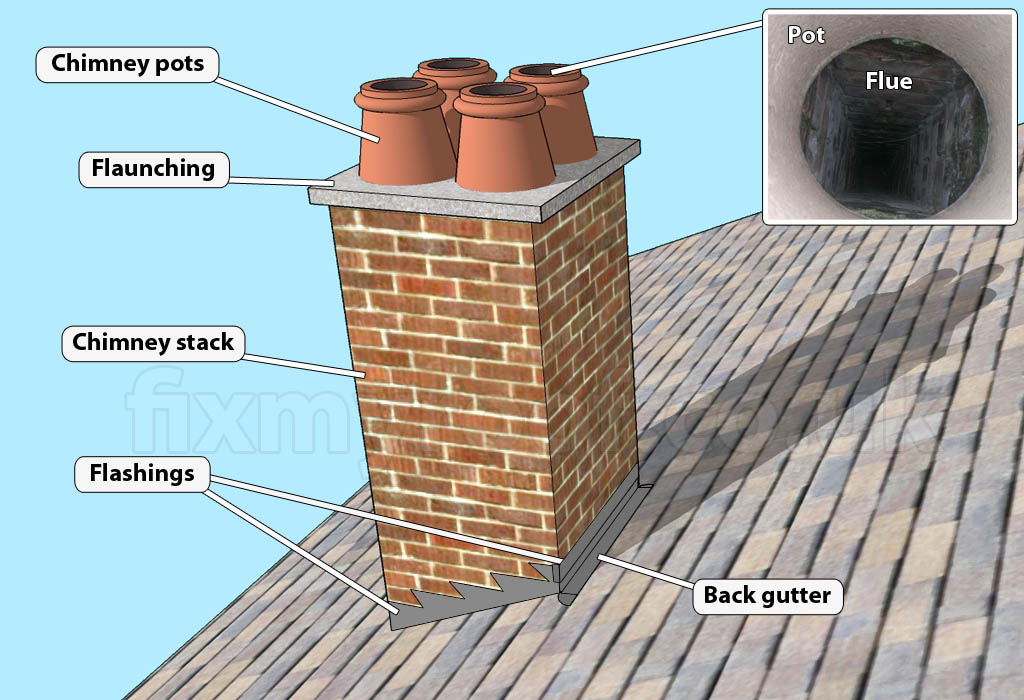
- CHIMNEY MASONRY STACK HOW TO
- CHIMNEY MASONRY STACK FULL
- CHIMNEY MASONRY STACK OFFLINE
- CHIMNEY MASONRY STACK PROFESSIONAL
Use a flue tile that is a minimum of 5/8-inches thick. Line masonry chimneys with flue tile, which withstands rapid changes in temperatures and doesn’t crack, but has a smooth side to make cleaning the chimney easier.For two-story homes, the footing needs to be 12-inches thick.For single-story homes, the footings need to be 8-inches thick.Footings need to extend no less than 6-inches beyond all four edges of the chimney.Therefore, footings require enough strength to hold the chimney’s weight without settling and they need to be placed on well-compacted soil. Metal chimneys need to be 6- to 7-inches in diameter for venting stoves and central heating systems, or 8-inches in diameter for venting central heating systems, fireplaces and stoves.Ĭhimneys made out of masonry are generally the heaviest part of the house and are made out of noncombustible materials such as brick, stones or concrete blocks. Whereas, a flue venting a stove and central heater should be 7.5 x 7.5-inches or 8.5 x 8.5-inches. For example, masonry flues venting only a fireplace should be 13 x 13-inches. Combined flues should have the main discharge flue appropriately sized to achieve the maximum amount of flow from the connecting smaller ones.The shape and size of flue cannot change within 6-inches of any points where the chimney is going to pass through floors, roofs or ceiling areas that are combustible.The slope of the flue isn’t greater than 30-degrees off vertical.For example, you can have multiple flues for gas-operated appliances, but you cannot have multiple flues if you are discharging burning wood from one and gas in another. Connecting flues are only discharging similar byproducts.Multiple flues can be used to discharge byproducts if meeting certain conditions: These obstructions cause the air to blow down the chimney instead of across its outlet. Outdoor air currents can sometimes affect draft if they have to blow around obstructions such as areas of the roof or nearby trees. Generally speaking taller chimneys create more draft than shorter ones. The draft is created when warm air (or smoke) naturally rises up through the chimney. Second, they release the combustion products outside the home’s living area keeping the air inside your home clean and safe to breathe.
CHIMNEY MASONRY STACK HOW TO
Functions Of A Chimneyīefore you learn how to build a chimney, you should first understand how a chimney works.įirst, they create a draft which pulls in the required oxygen for creating combustion.

However, if you have some masonry experience and you're confident with do-it-yourself type projects, building a chimney yourself is not only rewarding, it's a lot cheaper.įor starters, visit the National Fire Protection Association to view many local codes and regulations.
CHIMNEY MASONRY STACK PROFESSIONAL
If you are interested in learning more about our Stack and Chimney Repairs services, please contact our friendly team.If you don't feel comfortable with the project, sometimes it pays to just hire a professional who builds chimneys for a living. Some structural brick repairs may require the installation of a new liner which our team can assist with designing, fabricating, and erecting new liners for a variety of industrial brick chimneys and smokestacks. Our highly trained industrial chimney and smokestack professionals can replace and repair deteriorated brickwork and repoint masonry joints to ensure the structural integrity of your unit, as well as extend its useful life. The condition of the brick, mortar, and stone will be examined and any steel retaining bands will be checked for deficiencies or deterioration.
CHIMNEY MASONRY STACK FULL
Using rope access methods, our crew will visually inspect the full circumference of the chimney brickwork.

CHIMNEY MASONRY STACK OFFLINE
We can inspect the stack either online or offline as part of a maintenance strategy or in response to a problem.

Our team has extensive experience in the inspection and maintenance of industrial chimney stacks and provide access systems in a variety of forms including rope access, swing stage and bespoke platform. We can help you maintain your brick industrial chimneys, whether it is external deterioration of masonry or the atrophy of the inner coating of the smokestack. Masonry and brick materials are susceptible to water and moisture damage, and after years of production and facility usage, brick chimneys and stacks should be repaired and maintained.


 0 kommentar(er)
0 kommentar(er)
